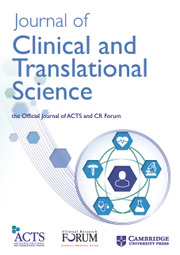No CrossRef data available.
Article contents
463 Childhood Emotional Neglect on Nucleus Accumbens Connectivity in Adult Survivors of Trauma
Published online by Cambridge University Press: 24 April 2023
Abstract
OBJECTIVES/GOALS: Neuroimaging research has found that childhood maltreatment is related to reduced activation of the nucleus accumbens. The long-lasting impact of this relationship is not as well understood. This study aims to explore the association between childhood emotional neglect and reward-related functional connectivity in an adult trauma sample. METHODS/STUDY POPULATION: Participants (N=169, M age=, 32.2; SD=10.3; women=94) experienced a traumatic injury and were recruited from a Level I Trauma Center. Two-weeks post injury, participants completed the Childhood Trauma Questionnaire (emotional neglect M=10.6; SD=5.2), a self-reported, retrospective account of childhood maltreatment, and underwent a resting-state functional magnetic resonance imaging (fMRI) scan. Whole-brain resting-state left and right nucleus accumbens connectivity analyses were completed using the CONN Toolbox. RESULTS/ANTICIPATED RESULTS: Whole-brain left nucleus accumbens connectivity analyses revealed one significant region (angular gyrus (AG); p DISCUSSION/SIGNIFICANCE: Results suggest that childhood emotional neglect is related to nucleus accumbens connectivity and a brain region associated with memory, attention, and theory of mind in adult survivors of trauma. Early life emotional neglect may be contributing to heightened baseline reward sensitivity–particularly for social rewards (implicated by the AG).
- Type
- Other
- Information
- Creative Commons
- This is an Open Access article, distributed under the terms of the Creative Commons Attribution-NonCommercial-NoDerivatives licence (https://creativecommons.org/licenses/by-nc-nd/4.0/), which permits non-commercial re-use, distribution, and reproduction in any medium, provided the original work is unaltered and is properly cited. The written permission of Cambridge University Press must be obtained for commercial re-use or in order to create a derivative work.
- Copyright
- © The Author(s), 2023. The Association for Clinical and Translational Science


